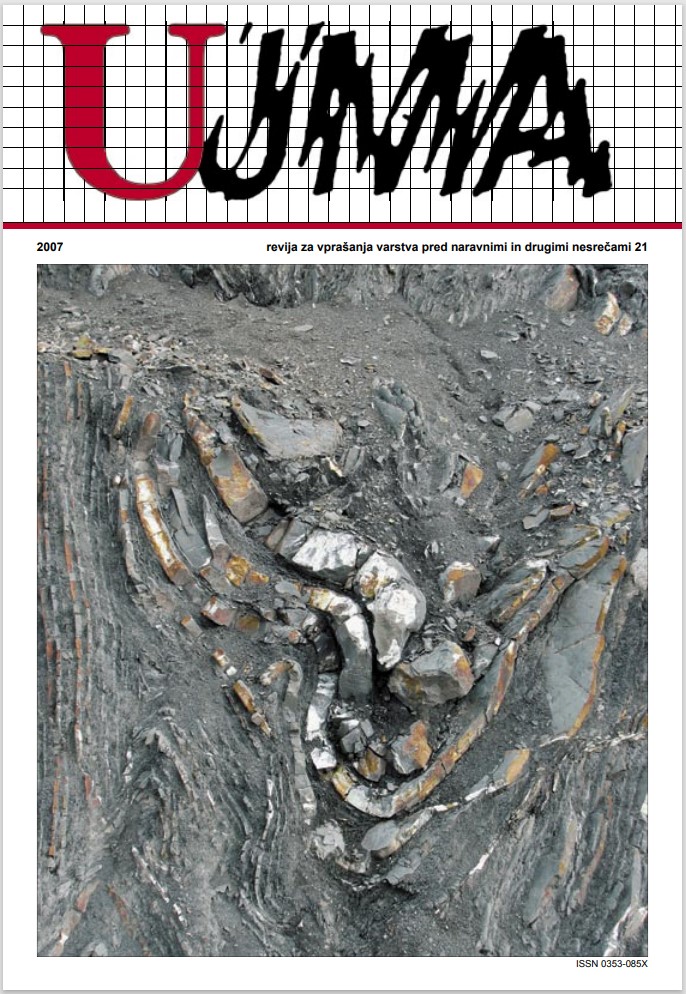SURVEY TYPES IN HUMANITARIAN MINE CLEARANCE
Abstract
Surveying is today a very important element of humanitarian demining and has gained in importance in recent years. Up until 1997, surveying was carried out in various countries blindly and very differently. In 1997, the first International Standards for Humanitarian Demining defined three levels of survey: Level One, or General Survey, Level Two or Technical Survey and Level Three or Survey after Completion of Demining. Methods and procedures for their implementation were also defined. The basic premises of the definition were the quantity and technical side of the danger of mines. Certain successfully performed surveys showed the durability of these definitions. The socio-economic impact of dangerous areas was highlighted in the starting point of the definition of new standards in 2003. These standards defined three types of survey: General Mine Assessment, Technical Survey and Documentation after Surveying. Together with these surveys, in practice Emergency Survey and Surveying the Impact of Mines are additionally carried out. The latter is globally conducted and gaining very much in importance. The process of prioritisation of dangerous areas is also closely connected with the new approach to surveying, which has become one of the basic elements of humanitarian demining. The process of humanitarian demining in Kosovo was a textbook case of the quality collection of mine data anmd the carrying out of surveying. Data were indirectly collected even before the end of the fighting and a general survey was carried out immediately after the ceasefire although it did not achieve satisfactory results. A modified Mine Impact Survey, and consequently also prioritisation was also carried out in Kosovo. Personnel of the Mine Centre only verified the results of prioritisation in the field and did not find major deviations. A technical survey was also carried out but exclusively in confirmed minefields, armed with a small number of anti-personnel blast mines.
References
Banks, E., 1998. Anti-Personnel Landmines: Recognising & Disarming. London.
Bean, P., 2006. A Guide to the International Mine Action Standards. Geneva.
Consolidation Minefield Survey Results Kosovo. The Halo Trust, september 1999.
Croll, M., 1998. The History of Landmines. Essex.
Dirscherl, J., 2004. Humanitarian Impact from Mines other than Anti-Personnel Mines. Geneva.
Downs, C., 2006. Increasing the Impact of Mine-action Survey. V: Journal of Mine Action, Issue 10.2, Winter 2006, 61–63.
Engineer Training, Majesty’s Stationery Office, London 1937, 183.
Filippino, E., 2005. Mine Action: Lessons and Challenges. Geneva.
Filippino, E., 2006. A Study of the Role of Survey in Mine Action. Geneva.
McGrath, R., 2000. Landmines and Unexploded Ordnance: A Resource Book. London.
Radić, N. V., 2001. Minsko ratovanje. Beograd.
Shawn, R., Williams, J., 1995. After Guns Fall Silent: The Enduring Legacy of Landmines. Oxfam.
Thompson, H., 1999. Landmines and Unexploded Ordnance in Kosovo. Priština.
Elektronsko dopisovanje: Steve Sounders, Velika Britanija, Kallie Calitz, Južna Afrika.
Downloads
Published
Issue
Section
License

This work is licensed under a Creative Commons Attribution-NonCommercial-NoDerivatives 4.0 International License.
The articles are made available to the public under Creative Commons Attribution-NonCommercial-NoDerivatives 4.0 International (CC BY-NC-ND 4.0).


